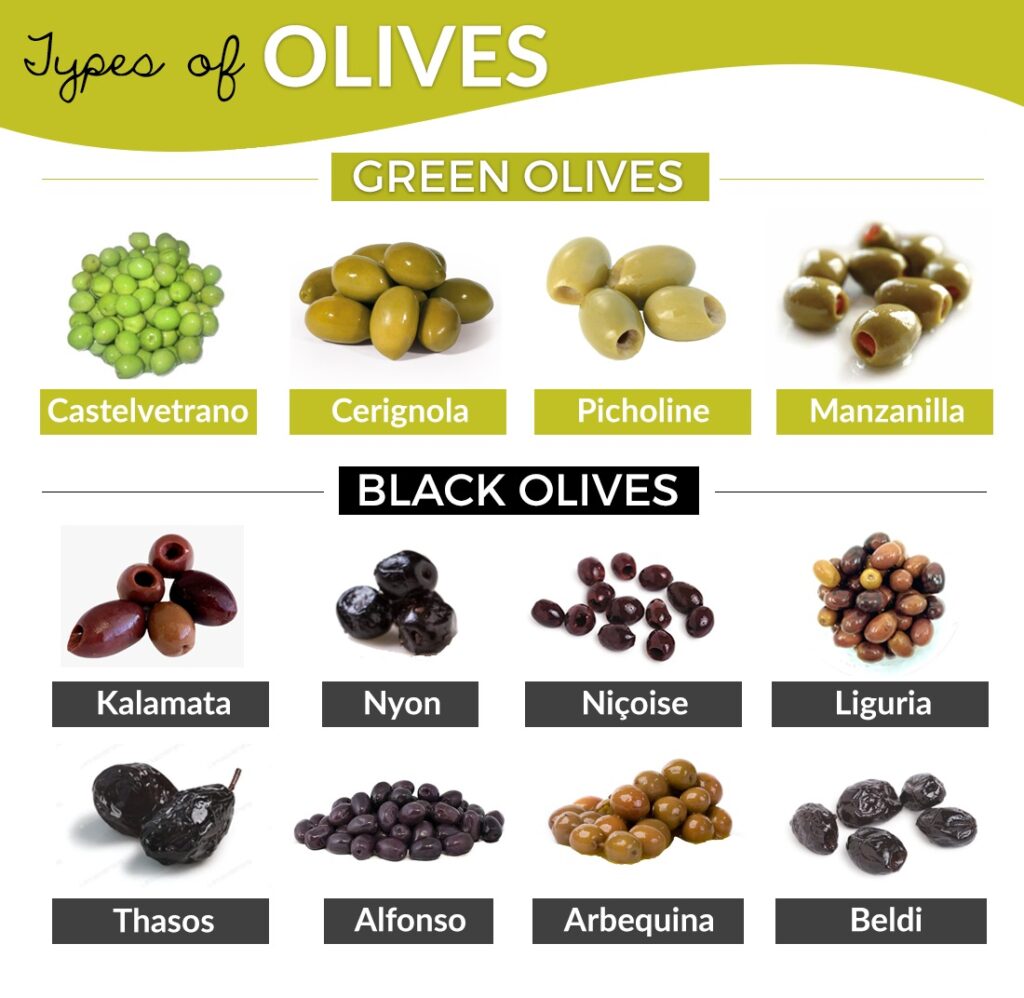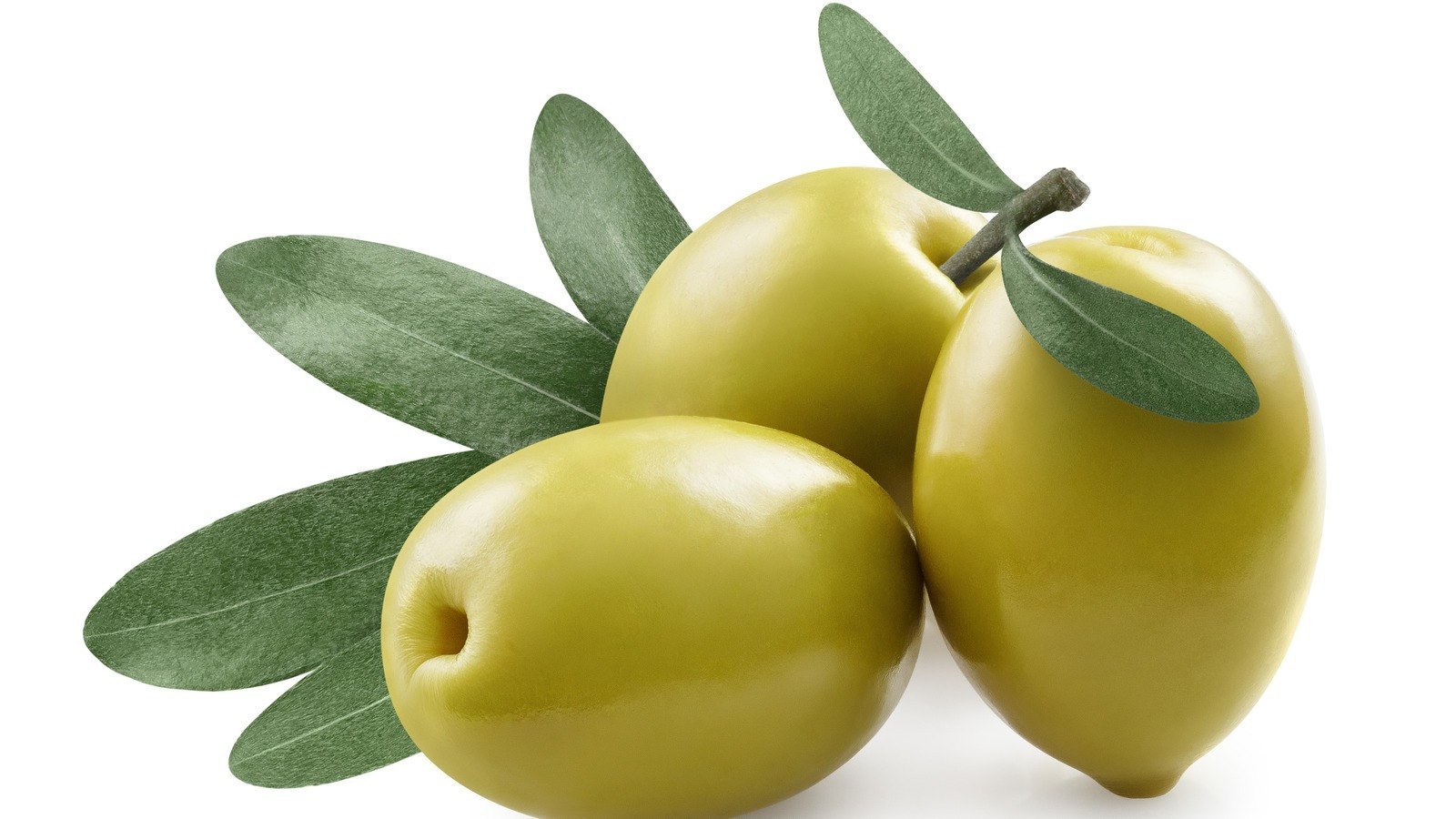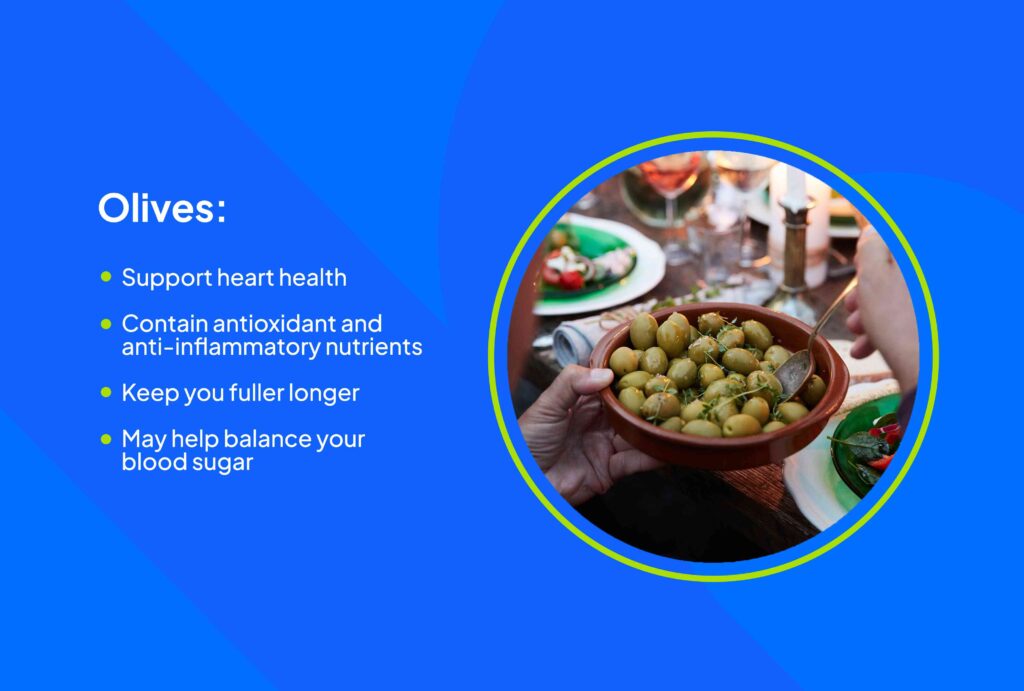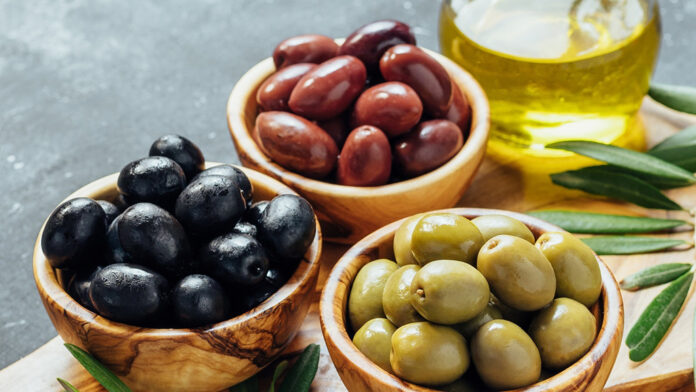OLIVE

An olive is a small, oval-shaped fruit that comes from the olive tree (Olea europaea). Olives are native to the Mediterranean region and are widely cultivated for their fruit and oil. They come in various colors, typically green when unripe and turning black or dark purple when fully ripe. However, some olives remain green even when ripe, depending on the variety.
Olives are a key ingredient in Mediterranean cuisine and can be eaten whole, usually after being cured to reduce their natural bitterness. They are also pressed to produce olive oil, a popular and healthy cooking oil known for its rich flavor and health benefits. Olive oil is a staple in cooking, salad dressings, and skincare products.
The olive tree itself is hardy, drought-resistant, and can live for hundreds of years, making it a symbol of peace, wisdom, and longevity in various cultures.
TYPES
Olives come in many varieties, each with distinct characteristics in terms of flavor, size, and color. Here are some popular types of olives:
1. Kalamata
- Origin: Greece
- Color: Dark purple to black
- Flavor: Rich, fruity, and slightly smoky
- Use: Often used in salads, especially Greek salad, or served as table olives.
2. Manzanilla
- Origin: Spain
- Color: Green
- Flavor: Briny, slightly nutty
- Use: Commonly stuffed with pimentos or anchovies, popular as a snack or in cocktails.
3. Castelvetrano
- Origin: Italy (Sicily)
- Color: Bright green
- Flavor: Buttery, mild, and sweet
- Use: Eaten as a table olive, in salads, or as an appetizer.
4. Niçoise

- Origin: France
- Color: Dark brown to black
- Flavor: Slightly bitter with a rich, nutty taste
- Use: Essential in Salade Niçoise, often used in tapenades.
5. Gaeta
- Origin: Italy
- Color: Dark purple to black
- Flavor: Mildly sweet, with a wrinkled skin
- Use: Often served as a table olive, used in pasta dishes and salads.
6. Arbequina
- Origin: Spain
- Color: Brownish-green to dark brown
- Flavor: Mild, fruity, and slightly nutty
- Use: Eaten as table olives or used to produce high-quality olive oil.
7. Picholine
- Origin: France
- Color: Green
- Flavor: Fruity, slightly tart with a crisp texture
- Use: Often served as a cocktail olive or in tapenades.
8. Cerignola
- Origin: Italy (Puglia)
- Color: Green, red, or black
- Flavor: Mild, meaty, and buttery
- Use: Eaten as a table olive, often served with antipasti.
9. Mission
- Origin: United States (California)
- Color: Black
- Flavor: Mild, with a slight sweetness
- Use: Often used in American olive products, including olive oil and tapenade.
10. Liguria (Taggiasca)
- Origin: Italy (Liguria)
- Color: Reddish-brown to purple-black
- Flavor: Sweet, slightly tart with a rich, fruity taste
- Use: Used in Ligurian cuisine, often in sauces and tapenades.
Are Olives Good for You?

Olives are rich in Vitamin E and other antioxidants, which may help reduce the risk of health conditions like cancer, diabetes, stroke, and heart disease.
Olives also contain:
- Vitamin A
- Copper
- Calcium
- Iron
- Vitamin E
Health Benefits
The vitamins and antioxidants found in olives may provide important health benefits. For example, some studies have shown that olives may protect against osteoporosis, in which bones become brittle or weak.
Olives are also rich in vitamin E, which can improve skin health and help your immune system.
In addition, olives may provide health benefits like:
Heart health
Numerous studies have shown that consuming olive oil, especially the extra-virgin variety, may reduce the risk of heart disease and death in people who have a high risk of this condition.
Lower risk and treatment of cognitive diseases
The oleocanthal in olives and olive oil is also linked to a reduced risk for Alzheimer’s disease and other brain-related diseases. This compound also increases the activity of the drug donepezil, which is used to treat dementia.
Healthy fats
The much-lauded Mediterranean diet promotes eating healthy fats, including olives, as well as olive oil.
Fat does have more calories than carbohydrates or protein. But when it comes to heart health, Peart says the type of fat you eat is more important than the amount.

“Years ago, there was a trend towards low-fat diets,” she explains. “Yet doctors found that when people reduced their fat intake, they ate more sugary foods. And at the same time, we saw an increase in people with obesity.”
Fiber in your diet
Most Americans don’t get enough fiber in their diets. Olives are a good source of the nutrient, containing 1.5 grams of fiber in about a half cup, says Peart.
Fiber helps:
- Maintain good digestion.
- Reduce your heart disease risk.
- Keep you full for longer.
Skin and Hair Health
Olives are rich in vitamin E, an antioxidant that nourishes the skin and protects it from the effects of UV radiation. It also supports hair health by maintaining moisture and preventing dryness.
Diabetes Management
The monounsaturated fats in olives can help improve insulin sensitivity and regulate blood sugar levels, making them beneficial for people with type 2 diabetes.
Weight Management
The healthy fats and fiber in olives can help increase feelings of fullness, which may aid in weight management by reducing overall calorie intake.
Bone Health
Olives contain calcium, which is essential for bone health, and polyphenols that may help improve bone density and reduce the risk of osteoporosis.
Side Effects
Olives also have some side effects if you consume more than required. Although these can be mitigated by proper use alongside a balanced diet, knowing them is vital. Olives are generally very healthy and do not pose risks to your health. However, improper consumption can potentially lead to health issues.
Here are some common potential risks associated with the consumption of olives:
- Weight Gain
- Allergies
- Low cholesterol level
- Skin Rash
- Blackheads
- Low blood and sugar level
This Article is for Basic Information. Contact a professional doctor before using it.
HAKEEM KARAMAT ULLAH
+923090560000




